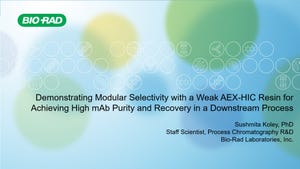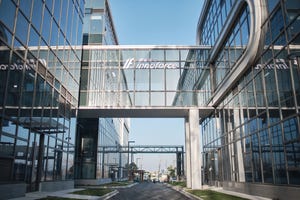
Automation can help biopharma enjoy the benefits of continuous processing says CPIAutomation can help biopharma enjoy the benefits of continuous processing says CPI
Automation can eliminate downstream bottlenecks and help pharma cut costs says the team behind a continuous downstream processing system at the UK Centre for Process Innovation.
August 24, 2020

Automation can eliminate downstream bottlenecks and help pharma cut costs says the team behind a continuous downstream processing system at the UK Centre for Process Innovation.
Manufacturing biopharmaceutical is a complex, time consuming and costly process. Most products are produced in batches – production runs through a series of steps and then ends.
Batch production is reliable and able to make consistent product. However, it can be slow and expensive according to Stuart Jamieson, head of research at the CPI, who told delegates at the BPI Europe virtual conference that industry needs to consider other options.

Image: iStock/Talaj
“There is the ever present need to focus on reducing cost for the benefit of future healthcare systems. Secondly, is time – especially for products with stability concerns – but also to streamline route to approval.”
Industry also faces other cost challenges associated with batch-based methods according to Jamison, who cited “the great improvements seen in upstream titre causing downstream processing to become the bottleneck, representing 60% or greater of downstream manufacturing costs.”
Continuous manufacturing is a good alternative according to Jamieson, who said, “Continuous processes have been proposed as a solution to many of these issues as they are scale-able and offer benefits such as higher productivity, reduced cycle times, reduced buffer and media usage and require smaller footprint and less capital intense facilities.”
Continuous downstream processing
Jamieson is part of a CPI team with GSK, Fujifilm Diosynth Biotechnologies, Allergan, MedImmune, Pall and Sciex on a project to apply continuous principles to downstream processing.
“The objective is to merge multiple unit operations to operate as one uninterrupted unit and thereby develop a flexible automated biologics downstream purification platform – including integrated analytics – that can be reconfigured for different processes.
He added the aim is to improve efficiency, reduce processing time and significantly cut capital, operations and material costs.
“Automated systems can help to simplify operations overall” Jamieson said, citing use of automated sampling points to reduce user interactions as an example.
“Although the flow is complex, the interactions with the overall control system [of the automated platform] are the same. Therefore, it is simple to train, meaning the complexity stays within the software.
A distributed control system – specifically Siemens PCS7 – was used to connect the various technologies running individual unit operations Jamison said.
“The successful concept we have applied has enabled us to achieve flexibility and re-configurability of the platform. We defined logical envelops around unit operations enabling us to hide the inner workings and only expose those details necessary to manage at a high level.”
He added that, “Regardless of the specific implementation all unit operations go through the same sequence of states or phases during their operation and therefore adhere to the same rules and manage faults in a similar way. The differences between unit operations are the specific conditions that each state represents. The advantages are that this simplifies design, training and operation and lends itself to an implementation where code is structured into sequences and phases.”
“As well as the automated purification, integrated analytics have been incorporated into the platform. Some data is collected continuously – such as UV, pH and conductivity – UPLC is collected within an hour of its integration into the system via an auto-sampler and then we have additional data collected post run.”
Challenges
The project was challenging according to Jamieson who said a multi-disciplinary team of scientists, engineers and software developers was required.
“The control system needed to be flexible to be able to handle various processes. Unit operations are also diverse and the number planned increases the complexity.
Jamieson said, “The traditional automation approach focuses on large manufacturing facilities with infrequent updates during their lifecycle. Whereas ours is designed to be routinely reconfigured and expanded requiring no, or minimal software rewrites.”
About the Author
You May Also Like






